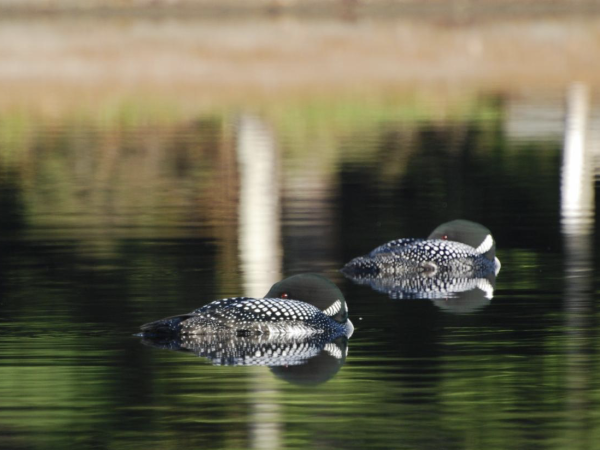Loon Preservation Committee: Loon Facts of the Month -- September
How Do Loons Sleep?
Due to the extreme rear placement of their legs on their bodies, loons are slow, clumsy, and therefore vulnerable when they are on land. Because of this, they only come up on land when it is absolutely necessary, such as when they are nesting or when they are injured or ill. The rest of their time is spent on the water—including when they sleep! How, when, and where do loons sleep?
Loons usually sleep on the water (unless they are incubating a nest—our LoonCams have often captured nesting loons sleeping while incubating!). To sleep, a loon will turn its head and rest it on its back, tucking its bill into its scapular feathers.
If you see a loon sleeping during the daytime, don't worry! Loons sleep in short bursts that may happen at any time, day or night. Daytime sleeping bouts tend to be a little shorter (averaging 14 minutes) than nighttime ones (averaging 24 minutes), and overall, loons spend more time sleeping at night than they do during the day. When sleeping, loons tend to prefer open water, further from the shoreline.
--shared courtesy of Loon Preservation Committee loon.org


